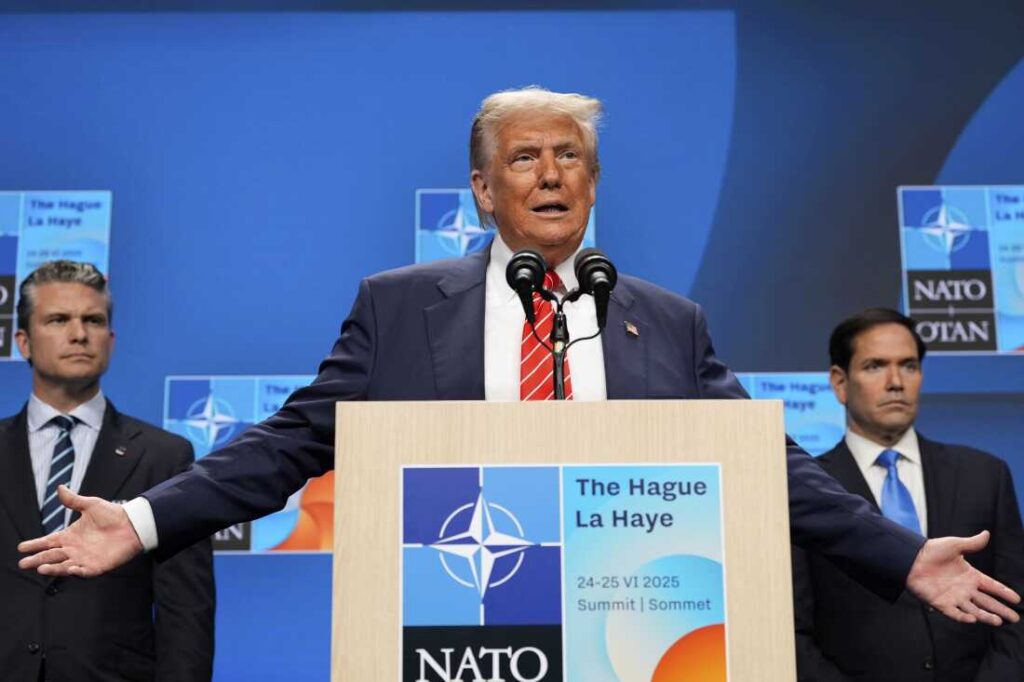
Trump is a particular man caught in a structural bind Donald Trump ran for office in the name of peace. Soon he was bombing the Middle East. The time was 2025 — and 2017. At that time, just months into his first term, Mr. Trump fired voyage dumdums at a Syrian government airbase, temporarily putting an end to warnings that Mr. Trump was a kind of isolationist who wanted to insulate the United States from world affairs. At the launch of Mr. Trump’s alternate term, history did n’t just repeat; it doubled down. This time, the chairman showed a lesser determination to be, as he said, a “ interceder and unifier. ” formerly again, foreign policy rightists in Washington bothered that he might collapse their design. For that veritably reason, sympathizers of lower American service intervention in the world, myself included, held out little stopgap. maybe our eyes were deceiving us, but Mr. Trump was busy trying to stop the holocaust in Ukraine and Gaza and forge a politic agreement with Iran. The chairman also sounded oddly flexible toward China, his first- term foe. “ We’ll measure our success not only by the battles we win, but by the wars we end and, maybe most importantly, by the wars we noway get into, ” Mr. Trump declared in his initial address. It’s a estimable standard, one that Mr. Trump deserves credit for setting. But six months into his administration, he deserves indeed further blame for failing to meet it. He has made no peace in Europe or the Middle East. His attack on Iran is the substance of his struggles a frantic, faltering attempt at concession that’s intruded by a parlous attack that sets the stage for farther war.
Unskillful geste
is only half the trouble. Mr. Trump is an entirely particular man in a deep structural bind. Time after time, the United States deploys its military forces contemporaneously across geopolitical divides in Europe, Asia and the Middle East. And time after time, it gets exactly what it intended for itself, inheriting far- flung conflicts as its own and lurching from one extremity to another at a time of its numerous opponents’ choosing. If Mr. Trump wants to reduce the country’s inordinate defense burden, as he claims, he must get the United States out of a position that guarantees it. But for all Mr. Trump’s talk and the fears of his critics, it’s uncertain whether he’ll actually indeed try. Trump, despite the flurry of review, got off to a promising launch on trans- Atlantic relations. He incontinently broke the taboo that had stifled discussion of a politic agreement to end the war in Ukraine a necessary and productive step. Observers quailed when his administration said Kiev would not give back all its home or join NATO, but these were concessions not just to Russia but to reality. Mr Trump’s Oval Office wrangle with Ukrainian President Volodymyr Zelensky, nasty as it was, served one purpose it induced Mr Zelensky not to anticipate any major US security guarantees and got him to negotiate a ceasefire with the Russians. Still, Mr Trump sounded exorbitantly confident he’d make peace, if not in 24 hours also at least in 100 days, as if Russia would simply give up its aggressive war. His new 50- day deadline has no chance of coming to consummation and reflects desirousness further than commitment. Going forward, Mr. Trump will moreover have to keep furnishing aid and intelligence to Ukraine commodity he should have said from the launch to press Moscow — or withdraw fully, which would pose a serious threat to America’s supporter in Kiev. Nor has Mr. Trump yet seized the occasion to shift the burden of Europe’s defense to decreasingly important European abettors . Since his defense clerk blazoned in February that European countries would” assume responsibility for the mainland’s traditional security,” American military means there have basically remained there.However, European countries will have to know what they should replace; they can not move forward until the United States withdraws, If the United States is going to withdraw some capabilities.
Mr. Trump, still, is undecided whether to withdraw some American forces or make European countries spend further. Also in the Middle East, That’s what the NATO peak last month suggested. European abettors pledged to devote 5 percent of their frugality to military purposes, and Mr. Trump was pleased. But Europe spending further does n’t insure that the United States will spend lower. Unless Mr. Trump lays out a multiyear plan to reduce the American military presence on the mainland and put supreme command of NATO forces in European hands, the United States will be no less vulnerable to the threat of war in Europe and its standing on the global stage will be lowered. In the Middle East, too, Mr. Trump started by taking some stimulating and estimable way. Bymid-May, when he visited Saudi Arabia and denounced the heritage of “ Western interventionists, ” he could point to an arising record of accomplishments. After a brief air crusade against Yemen’s Houthis, Mr. Trump secured a ceasefire with the group, which agreed to stop firing on American vessels.
Mr. Trump lifted warrants on Syria, allowing its new government to stay round. Most importantly, he gave the green light to addresses with Iran despite abandoning the before nuclear deal in 2018. He said he simply wanted to help Iran from acquiring nuclear munitions. But Mr. Trump snappily sabotaged his own trouble. First, he set an unrealistic 60- day deadline for addresses. also he poisonously agreed that Iran should give up its legal right to any uranium enrichment, including at low situations suitable only for mercenary use. Eventually, he allowed Israel which had long opposed any deal that would allow anon-nuclear Iran to strengthen its indigenous position — to sabotage its own addresses by bombing its adversary. Mr. Trump was too quick to launch his own attacks.